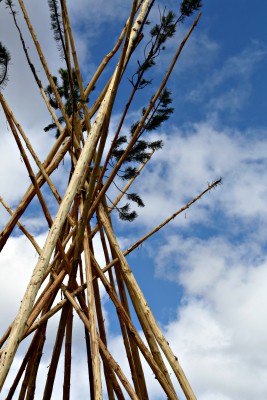Weaving American Indian Life into Fiction
Why are we fascinated with the lifestyle of American Indians? Has Hollywood so glamorized them that we as humans don’t want to lose the thrill of the west? Or are we still drawn in by how the west was tamed in a Louis L’Amour novel?
The real question is; however, how do American Indians wish the rest of the world would see them? After interviewing several men and women both on the Colville Reservation and in Canada, I’ve come up with answers that may help you. I can only hope, especially if you are a writer, you will see Natives in a new light and write about them from their perspective.
The tie to the reservation land by American Indians is deep rooted. What happened to them may have been inevitable, but how it was handled was unconscionable. But in time, their roots sank deep into the soil wherever they were planted within the United States. The land was something they could have and belong to. Very few young people leave their people. There are those who go to college and come back to work for the reservation, but most remain because they get so homesick. Family ties are woven as tightly as their baskets.
The reservation is a sanctuary. Even with tax exemptions and other benefits that make living cheaper, the quality of life is better off the reservation. But like I stated before, family ties run its roots deep into the soil. Life on their land is their world, their culture and their beliefs.
Unfortunately, today American Indians are still stereotyped. Why? Is it human nature? Is it pride? Or both? How do we overcome this? We read, we research and we visit museums. Some go further and visit the tribe they write about and if they are smart, go to a pow-wow and visit with elders. We connect and we learn. We respect as we wish to be respected. Just as in other countries there are many languages and personal beliefs, the same is for Indians living in North America. There are hundreds of tribes and thousands of dialects. If you are reading or writing about a specific tribe, it may be best to talk to someone affiliated with that tribe. Most have websites and are willing to share.
I have learned it is best not to generalize American Indians. They are not all alike. Each tribe, each family, each individual is unique because in the past all teaching was oral. Its lessons became a personal journey. Especially concerning religion. Even single words make a difference. For example, don’t use the word Shaman. They don’t! Use Medicine Man. Shaman in universal and incorrect; it is non-Native. The same goes for Coyote stories. They are to teach and speak to individual needs and not the general public. Native Americans are not a mass grouping and neither are any other race or culture.
It is in the writer’s best interest to not assume she knows about the tribe they are researching unless there has been extensive research and tribal contact. Books written by non-Natives regrettably have a lot of errors in them. I’m sure not done intentionally, but because they wrote from the outside looking in, translation was lost. Non-fiction books written by tribal members is a great start. Visit the tribe and tribal museums. Find and visit with an elder. Go to a pow-wow and ask questions. Then listen and learn.
You’ll find out dances have meanings. For instance, the Jingle Dress dance is a healing dance, while the Grass Dance is a dance that purifies the earth for the rest of the dancers to come. Each song has a special meaning. Again, don’t write too much because each tribe, family and individual are unique.
Something to keep in mind is that many rituals and dances are holy and should never be written about like the winter dance. They are kept behind closed doors so they remain pure.
Not all Indians living on the reservation are poor, drunk, dirty or violent. The reservation I live on is clean, and for the most part, peaceful and supportive. So you ask, do children go to school hungry? Is there a high alcohol and drug rate? Is suicide rampant? The answer is yes to all of those questions. But most have come together to help and heal in both Christian and traditional ways. They desire peace. They deserve respect.
Help me always to speak the truth quietly,
to listen with an open mind when others speak,
and to remember the peace that may be found in silence.
~American Indian Quote


I can’t believe I didn’t comment on this. Showing respect for individuals is utmost in my life. I cherish each and every person I come in contact with. Thanks for writing this Carmen, as always you do a great job.
Thank you!
Great post, Carmen! And I’ll be catching up with you in a couple of months for help on the next book. 😉 When is the powwow at Coleville?
Thank you, Paty. I look forward to working with you again. The Pow-wow in Nespelem is alway around the 4th of July. Let me know if you come up at all. I goes for two weeks.
You are most welcome, Gabby.
This is a really informative article, Carmen. The other day we watched (for the first time, though it’s quite old) the movie, “I Left My Heart at Wounded Knee.” I’m sure you’ve seen it. I am so thankful that I’m learning even more about the American Indians from you. Thank you!
Mary, that was a great movie. I’m glad you got a little something out of this post.
Thanks for your informative blog and what to remember if you’re “Weaving American Indian Life into Fiction.”